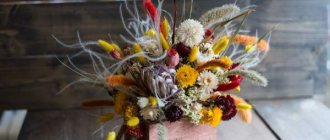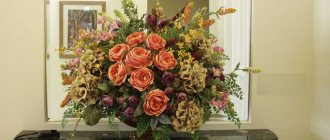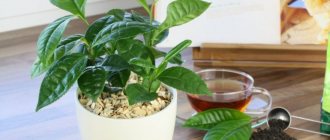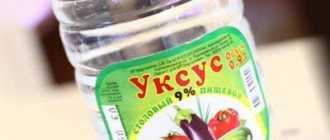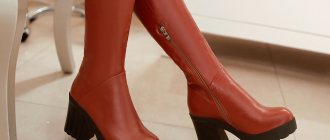When planning to leave home for a while, many are tormented by the question of how to preserve flowers during their vacation without watering. If you do not have the opportunity to leave house plants to relatives or friends, or entrust someone with the keys to your apartment while you are away, the tips collected in the article will help solve the problem.
Don't be afraid to leave indoor plants unattended for a long time
Ask neighbors
The first thing that comes to mind when it comes to taking care of indoor plants while you're away is to ask your neighbors.
It would seem like an obvious solution, because in this case the neighbors will be able to look after not only the flowers, but also the house as a whole. As you probably already guessed, this solution has only one drawback - you are giving the keys to strangers. Unfortunately, I know many stories when even the most respectable neighbors with whom you lived side by side for years and even decades, having received the keys, suddenly began to steal or allowed strangers into the apartment. Therefore, asking your neighbors to look after your indoor plants is only worth it if you have absolute trust in them.
How else can you clean dust from indoor flowers?
And a few general rules for cleaning dust from indoor plants. This mandatory hygienic procedure can be performed once a week or less often - it all depends on the intensity with which dust collects on the leaves.
Sometimes in garden departments you can see wet wipes for cleaning indoor flowers. They are easy to use, but can be replaced with cloth towels dampened with water. It is necessary to wipe both the outer and inner sides of the leaves. Do not allow a thick layer of dust and dirt to accumulate on the plants. The less a flower is polluted, the better it grows.
After wet cleaning, plants need to be protected from direct sunlight, cold and drafts. It is better to dry the leaves in a warm place with diffused lighting.
Place pots in water
If you still do not dare to entrust the keys to your house to your neighbors, then the easiest way is to place pots with plants in a container with water, for example, a large basin or bathtub. They should be placed in such a way that only the lower part of the pot is in the water.
Important! Please note that this method is suitable primarily for moisture-loving plants, since excess moisture will enter the soil.
How to water flowers while going on vacation using capillary mats?
You can also cope with the lack of water using capillary mats.
Instructions:
- This system is sold in gardening stores and consists of a mat that is covered with a protective film on top. In this case, it is necessary to build a special system. Pour water into the bottom tray, place a tray with holes on top, on which the capillary mat is laid out.
- Flowerpots with plants are placed directly on it. The capillary mat is constantly saturated with water, taking it from the pan, which is located below.
- Plants, in turn, absorb as much water as they need. The mat is quite cheap, so many people can equip such a system. Similar irrigation systems are used in greenhouses for growing seedlings and flowers.
Watering with capillary mats
In fact, there are a huge number of means for watering flowers in your absence. Now in gardening stores you can find special conical flasks that work on the principle of a plastic bottle. They have a droplet form into which water is collected. A thin spout is inserted into the soil and water gradually flows from this tube into the soil. Plants independently draw as much water as they need.
Cover with a “dome”
Another way to help plants survive your departure is to cover them with a “dome”, which can be any suitable transparent container, for example, a glass jar or a plastic bottle without a neck. Thanks to this simple method, evaporating moisture will condense under the “dome” and flow back into the pot.
Note! The edges of the “dome” should not extend beyond the pot, as otherwise the condensed water will flow beyond its limits.
Preparing house plants for a short trip
First of all, flowers need to be prepared for a long absence:
Avoid feeding 2 weeks before the expected time of departure. Since after fertilizing, flowers require more moisture to improve the absorption of minerals.- Reduce the usual amount of watering.
- Trim flowers and buds, inspect for the possibility of thinning the leaf mass. These measures will reduce water consumption.
- Move the flower to a shaded place where it will consume less water.
- Collect all the flowers in one place, this way you can increase the humidity in the room.
- On the day of departure, water the flowers generously.
- Place the clay pots in plastic ones and fill the space between them with a thick layer of wet expanded clay.
When going on vacation, it’s a good idea to give your flowers a hot shower, with a water temperature of 30 to 50 degrees. This event will strengthen their immunity, get rid of pests, and help them survive for a long time in extreme conditions.
Watering through the “wick”
If the plants still need watering, but do not like excess moisture, then it is worth organizing the so-called “wick” watering. To do this, a “wick” is twisted from a bandage, woolen thread or a narrow strip of fabric (or bought at a garden store), one end of which is placed in a pot with a plant, and the other in a container with water. This way the moisture will gradually move from the water container into the plant pot.
Advice. Please note that large plants can use a lot of water and one “wick” may not be enough to water the plant.
How to preserve flowers during the holidays: alternative methods
Another excellent way and the most fashionable is the use of hydrogel. This is a fairly fashionable method; balls can be purchased at any flower shop. The hydrogel is soaked in water for several hours. After it swells, after about eight hours, it is placed on top of the pot. Thus, the hydrogel will gradually release water into the soil, moistening it. This method is suitable if you need to go on vacation for about a week. Please note that when drying, hydrogel beads can release substances that are harmful and toxic to the body.
You can also use some knowledge in electronics. This method is suitable if you know a little about electricity. You can make a waterer yourself. To do this you will need a large saucepan with a hole drilled in the bottom. A tube is welded onto it, to which a magnetic valve is connected. Several tubes extend from it, each to its own pot, and a time sensor is installed. After a certain time, the magnetic lock will operate and release water for several minutes. This type of watering is absolutely enough to moisturize the plants and not last for up to 3 months.
Watering flowers
For people who don't spare money and who are often absent, moving and on business trips, so-called smart pots are ideal. This is a kind of system that resembles a pot in a pot. This way there is water inside the smart pots. Above it is a container with expanded clay and soil. The flower simply draws water as the soil dries. Such pots are not cheap, so not everyone can afford them. Accordingly, many people who do not have the opportunity to purchase such a system choose more affordable options that can be made with their own hands.
Watering flowers
Moisturizing through fabric
As an alternative to the “wick,” you can use a fabric, one end of which will also be placed in a container of water, and pots with your favorite plants will be located on the rest of the fabric. In my opinion, this option is not the most successful, since the water will not be distributed evenly over such a large area. This can cause plants at the far end of the fabric to lack moisture. In addition, if waterproof material is not laid under the fabric and along its edges, then moisture will harm the surface on which the plant is located, for example, the floor or table.
What not to do
The only and main mistake a gardener makes when going on vacation is to flood the plants to capacity, hoping that this volume of water will be enough for them the entire time. As a result, root rot often develops. Or the soil simply dries out to the state of stone. It is very difficult, sometimes impossible, to revive such plants.
If you ask relatives and friends for a favor, be sure to leave them detailed instructions - what, when and how much to water. Those who have no experience in floriculture may decide with the best of intentions: the more water, the better for the plants.
Drip irrigation
The option with drip irrigation is much more effective. To do this, a small hole is made in the cap of a regular plastic bottle. The bottle itself is filled with water and inserted into the soil with the neck down so that the water enters the soil through the hole.
This method has only one drawback - it is very difficult to determine what size the hole should be so that on one side the plant has enough moisture, and on the other the soil does not turn into a swamp.
Devices and devices for automatic watering on the market
If desired, you can purchase a ready-made model for automatic watering of flowers, which is capable of irrigating plants at a specified frequency. Moreover, it is possible to program the day and hour of watering.
Green Helper ODS 70
Fully automated drip irrigation system . Capable of simultaneously irrigating up to 24 plants in pots of different sizes. It is possible to program the amount of water for each plant, frequency and time of watering. No water connection required. Cost 3900 rubles.
Drops system
It is presented in the form of a dispenser plug, which is connected to a plastic bottle. The sharp end of the device is inserted into the pot. The system works by expanding air against the background of temperature changes.
Due to this, in hot weather there is an increase in the intensity of watering, and in cool weather - a decrease. Irrigation lasts for 20 days. The set contains 4 dispenser plugs. Cost – 630 rubles.
Foraworld 27 x 6 cm
The device is attached to a water bottle . It is possible to regulate the water supply. Includes 2 pieces. Cost – 1130 rubles.
For your information, there are “smart pots” on the market that can independently regulate the level of soil moisture; they come complete with a reservoir from which water flows to the root.
Automatic watering system
But why reinvent the wheel when it’s the 21st century and technology is firmly rooted in everyday life? Now it is not at all difficult to buy and organize an automatic watering system, and the cost of such a unit rarely exceeds several thousand rubles. Moreover, they are sold in almost any garden store.
Of course, we are talking about fairly simple systems that supply water to the pots once at a certain time interval, for example, once a day. There are also more advanced systems that, for example, can be controlled remotely manually, but they cost significantly more, but are not much more effective.
As you can see, keeping indoor plants during your vacation is not that difficult. Most importantly, try to remember them not just a few minutes before departure.
Preparation
You can preserve homemade flowers in pots during the holidays using two approaches to solving the problem. If you are leaving for several days (up to two weeks), then you should try to preserve as much as possible the moisture received during the last watering, so to speak, water the flowers “with a reserve.”
Flowers in pots made of natural materials (clay, ceramics) better tolerate the lack of periodic moisture.
If you are away for a longer period of time, you will hardly be able to do without a remote watering system. However, you should not be afraid of the second method. In addition to expensive automatic devices, there are many options for solving the problem using simple improvised means.
No matter how long your vacation or business trip lasts, indoor plants need to be prepared for the lack of usual care. Follow these simple steps:
- if flower pots are on window sills, remove them and place them on the floor;
- create moderate lighting for them ( in no case should you completely cover the windows with thick curtains, otherwise the plants may die );
- choose a draft-free room for flowers;
- do not fertilize for at least a week before departure;
- inspect the stems and leaves for diseases, pests, remove all damaged, infected or simply dried parts;
- cut off overly large leaves, as well as flowers and buds.
Most of the preparatory actions are aimed at “preserving” plants. If the life processes in them are not as active as in normal times, then they will consume less moisture and, accordingly, will more easily tolerate its lack.
Retains moisture after last watering
- Water the plants thoroughly just before your detour. Ideally, watering will be done by immersing the root ball.
- Remove plants from window sills away from the window, or even onto the floor - the less lighting, the less moisture the plant evaporates. Of course, this will slow down the growth of the plants, and you will have to get them into shape upon arrival.
- If the plant has buds or flowers, they need to be cut off, as well as a few leaves. This way we will also reduce moisture consumption.
- We place the plants in large trays, basins, if they fit, then several at a time. At the bottom of the pallets we scatter wet expanded clay in a layer of about 5 centimeters. We also pour water so that about 2-3 cm of expanded clay is in the water from below. And in order for the expanded clay to always remain moist, we fill large plastic bottles with water, make small holes in the very bottom, and place them on the expanded clay next to the pots - the water will gradually seep out, preventing the expanded clay from drying out.
- We place flowerpots with plants on expanded clay, but more closely (this also preserves high humidity). We also place damp sphagnum moss between the pots.
- You can also stretch a transparent film over the top or place some plants in transparent bags, only those plants that do not have pubescent or fleshy leaves (otherwise they will become moldy or rot). Just don’t forget that later these plants from the “greenhouses” will need to be accustomed to open air and lower humidity gradually.
Hotel for flowers
Similar services probably already exist in every major city. In small regional towns, you can also probably find people engaged in a similar business - sheltering flowers during the departure of their owners. Search through advertisements, on local forums, and place an advertisement yourself that you need such services. The main thing here is not to run into a person who knows little about plants. Otherwise, upon arrival, you will find that your pets will still have to be resuscitated, even after placing them in a plant hotel...
Removing pots from sunny places
To ensure that the soil in pots dries out more slowly, all flowers in the house should be removed from sunny places before leaving. A good solution, for example, would be to place them in the corners of the apartment, where only diffused light penetrates.
In this case, it is advisable to place flowers in the corners in large groups. In this case, they will begin to create a comfortable microclimate for each other.
The doors in the room where the flowers will be placed should be left open during the holidays. This will provide the plants with the ventilation they need. Also, when leaving, you need to open the doors to those rooms in the house that have ventilation outlets. Usually this is a bathroom and a kitchen.
